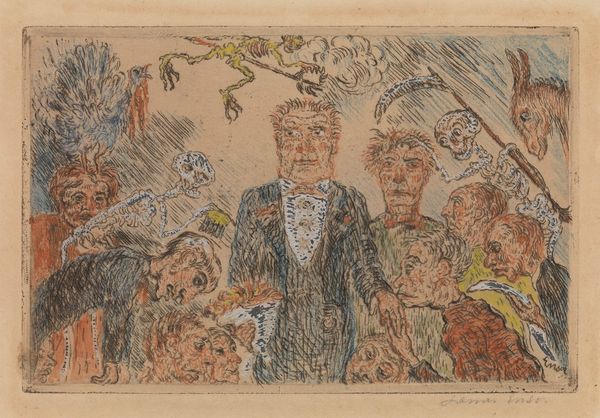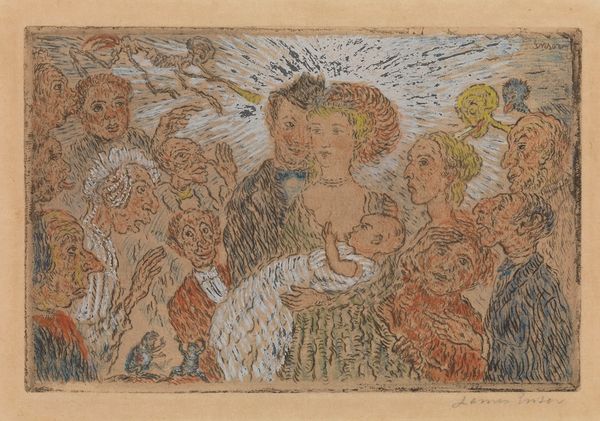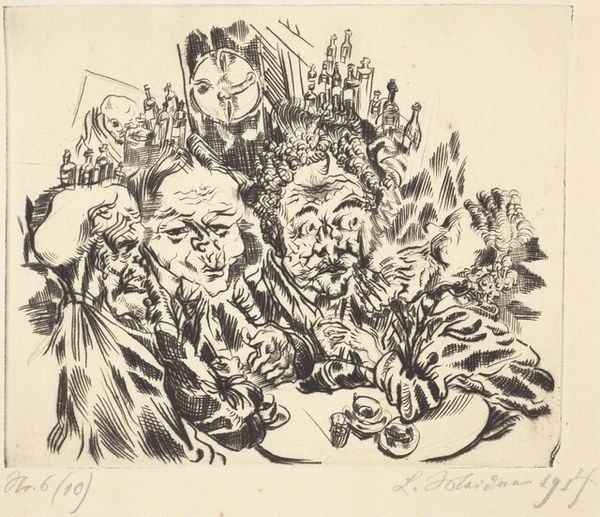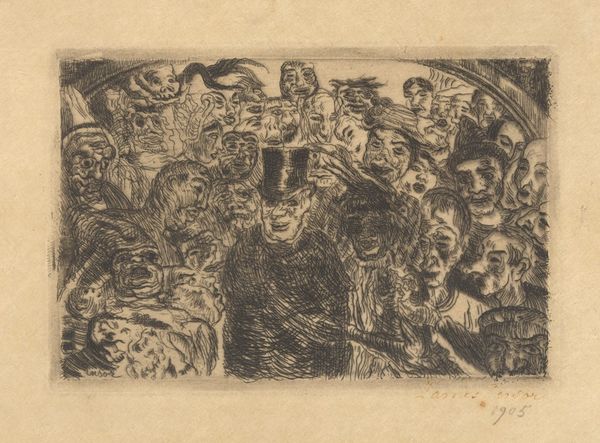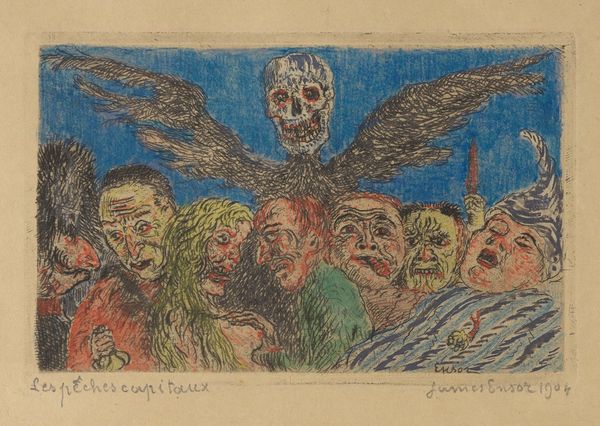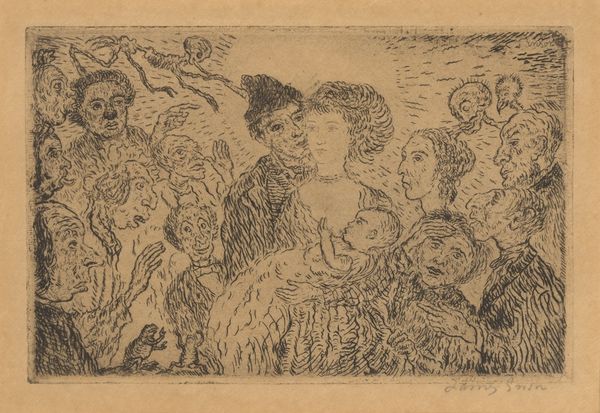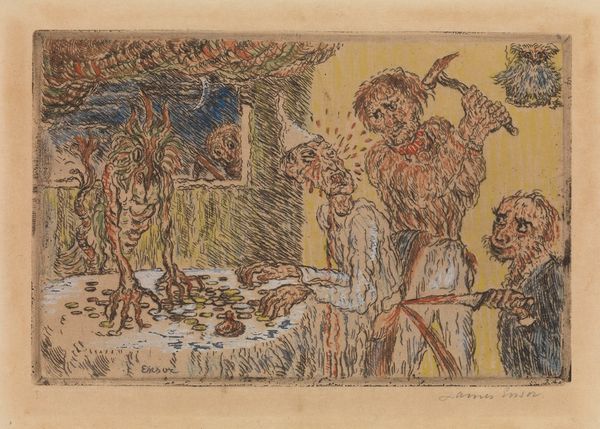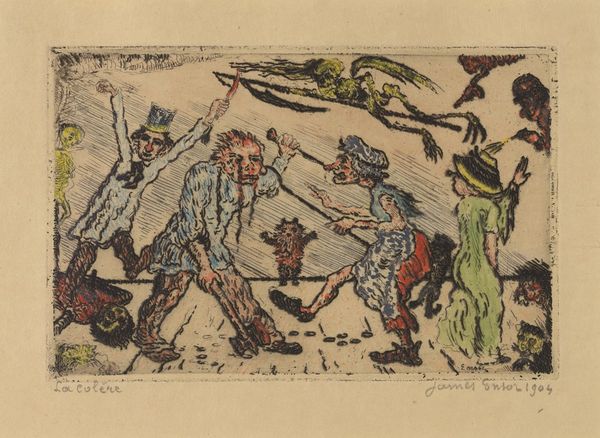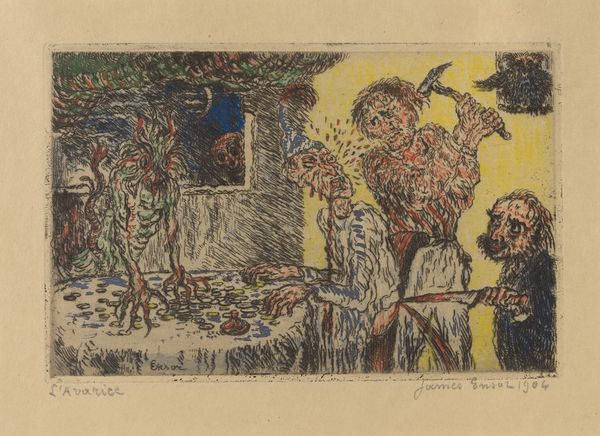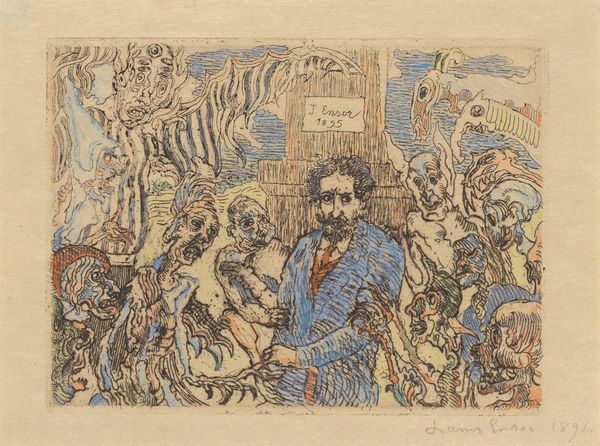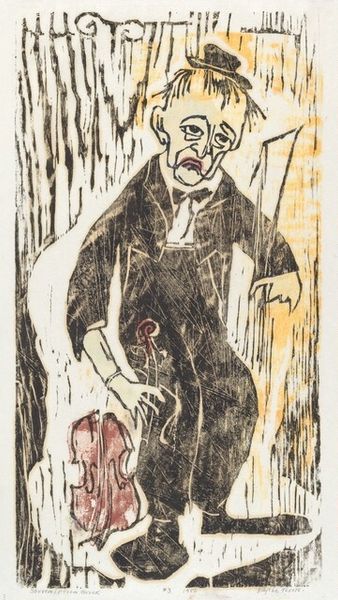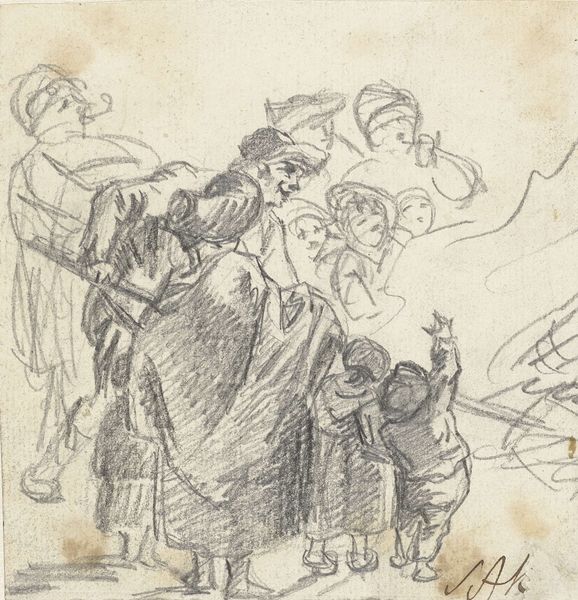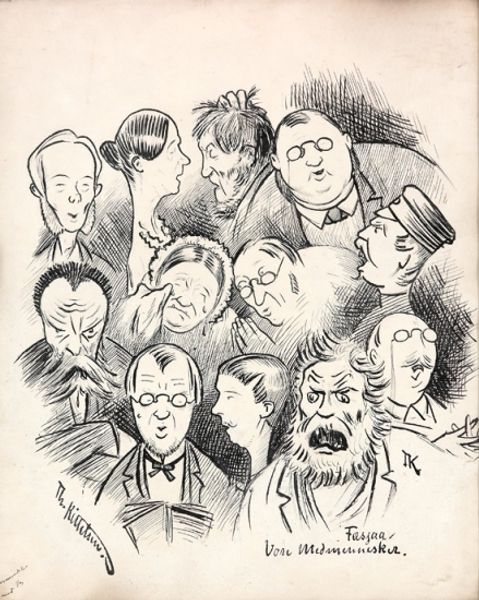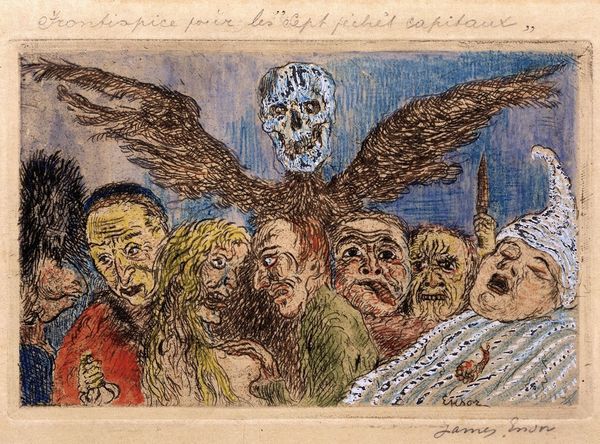
print, etching
#
portrait
# print
#
etching
#
caricature
#
coloured pencil
#
group-portraits
#
symbolism
Copyright: Public Domain: Artvee
Curator: Here we have James Ensor's "De hoogmoed," or "Pride," an etching dating from 1904. It’s quite a striking composition. Editor: Oh, wow, what a fantastically grotesque gathering! It hits you with such an unsettling, carnival-esque feeling, like a dark joke played on humanity. Curator: Indeed. Ensor was very interested in the symbolic possibilities of printmaking, particularly etching. We can see that he explored that by deploying etching's graphic capabilities in a social caricature about the theme of pride. Editor: There's so much to unpack here, literally layers of bizarre characters and grim symbols. The central figure radiates this puffed-up arrogance, surrounded by these almost zombie-like figures. What's the story here? Curator: Ensor uses his characteristic visual vocabulary to express his disapproval of society’s elite at the time. His usage of the medium here—the etching marks—creates a textured, almost feverish surface. This reinforces the social critique he offers by showing a society filled with prideful figures whose attitudes affect the livelihoods of everyday people. Editor: It’s brilliant how the vibrant colors juxtapose with the macabre subject matter, creating this uncomfortable tension. I can almost hear the cackling. It feels like a condemnation and an absurd dance all in one. I’d like to imagine Ensor laughing maniacally as he was making it. Curator: I agree! And he seems to be reminding us of what happens when pride overshadows empathy, producing this dark and strangely comic mirror held up to society. Editor: Well, it's a great demonstration of how a simple etching, through a great artist's skillful use, can be more potent than a sermon. I feel provoked, amused, and just a tad bit disturbed all at once. Curator: An effect undoubtedly intended by Ensor himself. By examining Ensor's etching and understanding how its technical production results in a critique about class, the themes and figures depicted can tell us much about Ensor's place in his time.
Comments
No comments
Be the first to comment and join the conversation on the ultimate creative platform.
